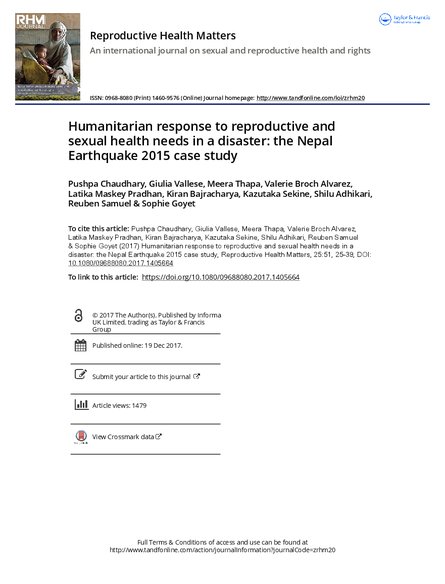
This case study describes the health response provided by the Ministry of Health of Nepal with support from UN agencies and several other organisations, to the 1.4 million women and adolescent girls affected by the major earthquake that struck Nepal in April 2015. After a post-disaster needs assessment, the response was provided to cater for the identified sexual and reproductive health (RH) needs, following the guidance of the Minimum Initial Service Package for RH developed by the global Inter-Agency Working Group. We describe the initiatives implemented to resume RH services: the distribution of medical camp kits, the deployment of nurses with birth attendance skills, the organisation of outreach RH camps, the provision of emergency RH kits and midwifery kits to health facilities and the psychosocial counselling support provided to maternity health workers. We also describe how shelter and transition homes were established for pregnant and post-partum mothers and their newborns, the distribution of dignity kits, of motivational kits for affected women and girls and female community health volunteers. We report on the establishment of female-friendly spaces near health facilities to offer a multisectoral response to gender-based violence, the setting up of adolescent-friendly service corners in outreach RH camps, the development of a menstrual health and hygiene management programme and the linkages established between adolescent-friendly information corners of schools and adolescent-friendly service centres in health facilities. Finally, we outline the gaps, challenges and lessons learned and suggest recommendations for preparedness and response interventions for future disasters.
